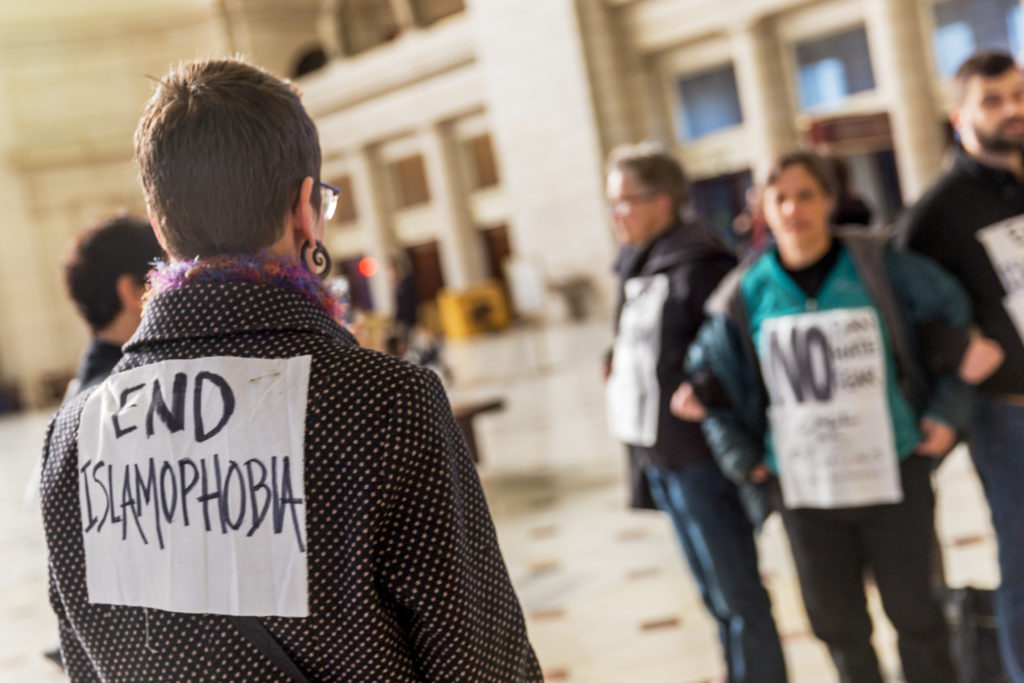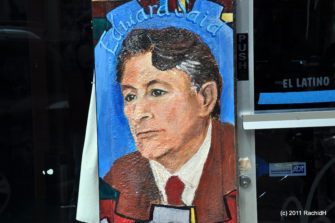
A postcolonial approach to the study of religion and peacebuilding must begin with demystifying the dominant myths that impede productive discussion. Popularized by academics, pundits, and the media, these myths reflect Eurocentric and Euro-American biases that have deep connections to colonialism. Demystifying these myths will make it easier to engage in peacebuilding work across religious traditions.
The first myth is the “clash of civilizations” myth proposed by political scientist Samuel Huntington. Huntington suggests that future wars and conflicts will not be fought because of ideological differences, but because of clashes between religiously based civilizations. His hypothesis became popular because it asserted Western hegemony and provided an explanation of world politics in the post-Cold War era. However, his understanding of cultural and religious difference has deep roots in colonial discourse. In Orientalism, Edward Said pointed out how, in pursuit of colonization, the West created an image of the “Orient” as inferior, backward, and uncivilized for the purposes of control and domination. Huntington reactivated this threat and the fear of colonial difference by treating civilizations as homogeneous and bounded entities with no cross-civilizational interactions and crossovers.

The second myth is the myth of secularization, which regards religion as irrational and incompatible with modernity. The secularist myth sees religion as either irrelevant or a problem for social life in general. More particularly, it sees religion as an obstacle to conflict resolution. Proponents of secularism point to religious elites and religious institutions as the sources of social conflict. This secularist myth displays Eurocentric and colonialist biases when it takes the development of Western history since the Enlightenment as the normative measure of the trajectories of other societies. In Formations of the Secular, anthropologist Talal Asad gives an historical account of the concepts and political formations of the secular that have shaped secular attitudes in the modern West and Middle East. He argues that the secular cannot be viewed as a successor to religion or be seen as more rational than religion. The secular has a multilayered history in different cultures. His study challenges a monolithic understanding of modernity that uses capitalist modernity as the model, and invites further inquiries into what scholars have called “global modernities.”
The third myth is dangerous and Islamophobic, for it proposes that some religions, such as Christianity and Buddhism, are inherently peaceful, while Islam is militant and condones violence and Jihadism. This argument is dangerous because it can lead to false stereotyping and the scapegoating of whole populations. It is ahistorical because it overlooks the Crusades, Christianity’s complicity in genocide and colonialism, and the internal rivalries within both Christian and Buddhist traditions. The association of Islam with religious violence and the language of “religious insurgence” as threatening also shows again a strong Orientalist bias. It downplays the history of colonialism, marginalization, and displacement in the Muslim world. The acts of a tiny minority of Muslim extremists should not be taken as representative of Islam as a whole. There are many Muslim leaders and organizations working tirelessly for peace. In Nonviolence and Peacebuilding in Islam, Mohammed Abu-Nimer shows that there are principles and values in Qur’an, Hadith, and other elements in the Islamic tradition that support peacebuilding and conflict resolution.
Postcolonial studies can help demystify these myths and also shed light on problems inherent in the study of religion. Postcolonial critics point out that “religion” is a problematic category and the study of religion in the modern West has often been linked to racism and the construction of the Other. When the academic study of religion developed in the mid-nineteenth century during the heyday of colonialism, Christianity was taken to be the reference when compared to the “mythic” religions of the East and the “primitive” religions of Africa. As religion emerged as a field of study in academia, there was a tendency to treat “religion” as sui generis and separate from other cultural, social, and political aspects. This reductionist and simplistic approach continues to be seen in introductory “World Religion” courses. Here, different religious traditions are reduced to certain belief systems, creeds, heroes, and a few key practices. In the name of religious literacy, a very truncated form of knowledge is introduced, which may heighten the differences of diverse traditions and reinforce biases students have already held. These kinds of introductory courses do not promote dialogue and peacebuilding because they reinforce colonial and Orientalist myths. Using insights from postcolonial and decolonial studies, Richard King, David Chidester, Santiago Slabodsky, and myself have pointed to new ways of conceptualizing the study of religion and theology drawing on our studies of Indian religions, African religions, Judaism, and Christianity respectively.
Postcolonial studies also offers constructive criticism for the emerging field of religion and peacebuilding, which focuses on the themes of interreligious dialogue, the retrieval of religious resources for peacebuilding in various traditions, and the instrumental role that religious actors and networks play in the dynamics of both conflict and peacebuilding. While studies in these areas have much to contribute, too often their focus has been on male academics, educated elites, and prominent religious leaders. More than thirty years ago, Gayatri Chakravorty Spivak, a leading postcolonial theorist, asked, “Can the subaltern speak?” Her question raised issues concerning the politics of representation, the relation between power and knowledge, and the importance of creating infrastructures so that subaltern voices could be heard and understood. In the study of religion and peacebuilding, it is crucial to pay attention to subaltern religious consciousness and grassroots efforts in promoting peace.

Women’s participation in peacebuilding also needs to be highlighted. Women, Religion, and Peacebuilding discusses the obstacles and opportunities women religious peacebuilders face because patriarchal practices have often prevented them from assuming authority in religious organizations and leadership in peace efforts. Some women seek to work through religious institutions or find other spaces to promote peace and exert their influences. The late Dekha Ibrahim of Kenya, a devout Muslim, served as a trustee of Coalition for Peace in Africa and received several international awards for her peacebuilding efforts. Buddhist nun Mae Chee Sansanee from Thailand led a peace walk and reached out to Muslim women when conflicts broke out between the Buddhists and Muslims in southern Thailand. She has also led interreligious dialogue in conflict zones around the world. Catholic sister Marie-Bernard Alima of Congo formed a network called the Coordination of Women for Democracy and Peace to educate and train women to provide leadership in human rights, political movements, and efforts to prevent sexual and gender-based violence.
Postcolonial critics regard cultures and histories as overlapping and mutually inscribed, and such recognition can aid in peacebuilding. It is helpful to use the lens of hybridity to investigate how different religions and cultures have encountered, learned, and borrowed from one another and changed as a result. For example, when Christianity came to China in the seventh century, it had to borrow Buddhist and Daoist concepts to translate Christian terminologies. The symbol of Nestorian Christianity was a cross resting on a lotus flower, the latter of which is a symbol from Buddhism. A hybridized understanding of religious traditions and religious identities will help overcome a binary construction of “us” versus “them” and recover the history of complex interactions among diverse religious traditions. It will also open avenues to imagine identity and difference as fluid and changing in our increasingly interconnected world.


Enjoyed the piece. The following may also be of interest since many of the chapters take broadly takes a postcolonial approach:
https://rowman.com/ISBN/9781786610393/Rethinking-Peace-Discourse-Memory-Translation-and-Dialogue